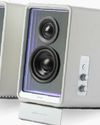
When you think about, it is quite amazing how quickly smart speakers have become so completely normalised. Speech recognition has been around in some limited form since the 1960s when IBM built the Shoebox, capable of recognising a then-astonishing 16 words and numbers. In the mid-1990s, Dragon Dictate introduced reasonable (though sometimes comically imprecise) speech recognition on the desktop as long as you were willing to invest around twice the price of a computer to pick up V1 of its software. You could argue that it was Apple that brought voice tech to the masses with Siri, though Siri actually started development in 1993; Siri Inc was snaffled up by the Cupertino giant in 2010, and hit the iPhone in 2011.
But to look at any company other than Amazon as the cause of the spectacular growth of smart speakers would be to look in completely the wrong direction. Alexa, first introduced with the Amazon Echo exclusively for Amazon Prime members in 2014, beat Microsoft’s Cortana to the market and came two years before the Google Assistant. That first Echo caught a huge amount of press and public attention: here was something brand new in the tech field. A self-contained AI brain, squashed into a speaker that wasn’t too shabby at pushing out a tune. Amazon expanded its capabilities with Alexa Skills, it released a friendly API with terms of use acceptable enough that all and sundry began build compatible smart devices. It made the voice assistant a thing.
Flat-bottomed spheres
この記事は MacFormat UK の December 2020 版に掲載されています。
7 日間の Magzter GOLD 無料トライアルを開始して、何千もの厳選されたプレミアム ストーリー、8,500 以上の雑誌や新聞にアクセスしてください。
すでに購読者です ? サインイン
この記事は MacFormat UK の December 2020 版に掲載されています。
7 日間の Magzter GOLD 無料トライアルを開始して、何千もの厳選されたプレミアム ストーリー、8,500 以上の雑誌や新聞にアクセスしてください。
すでに購読者です? サインイン

Baldur's Gate 3
An all-time Mac classic that offers dungeons and dragons gameplay

Belkin Connect 11-in-1 Pro Dock
Unusual laptop dock with VGA support for older displays

Creative Aurvana Ace 2
Creative's latest earbuds introduce a brand new audio tech

Edifier QR65
Take yourself back to high-resolution, true stereo audio

Netgear Orbi 970
Get ready for a Wi-Fi 7 future with this premium mesh system

Gaming on the Mac
Apple silicon and the Vision Pro mean that Apple is finally getting serious about playing games

Perfect your portraits
Discover how to shoot better people pictures in a range locations

Give it your best shot
Take amazing photos on your iPhone - we show you how

OLED displays
The OLED display in the new iPad Pro is a great leap forward

Use your Mac's 2FA features
Learn how to create one-time passwords in Safari and System Settings